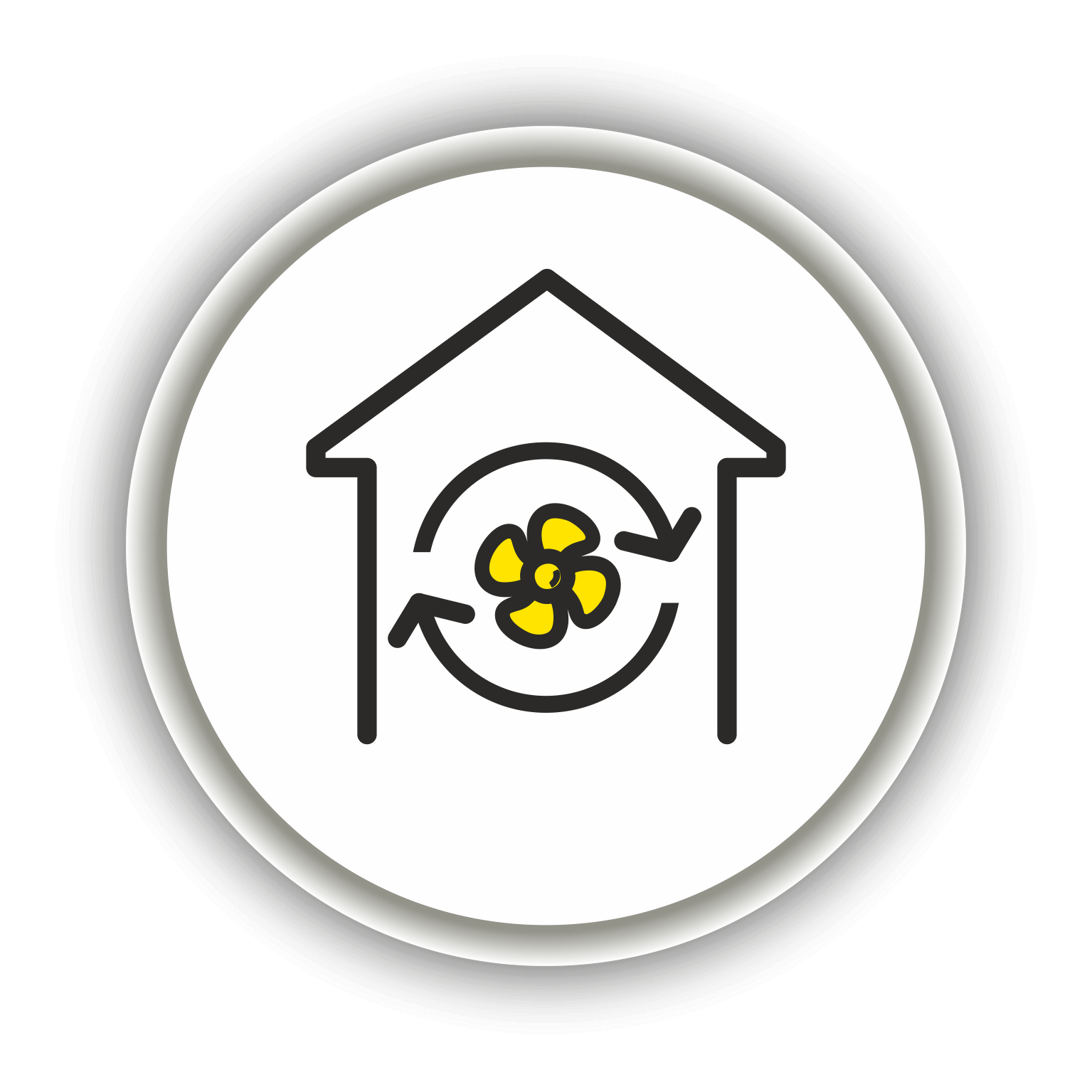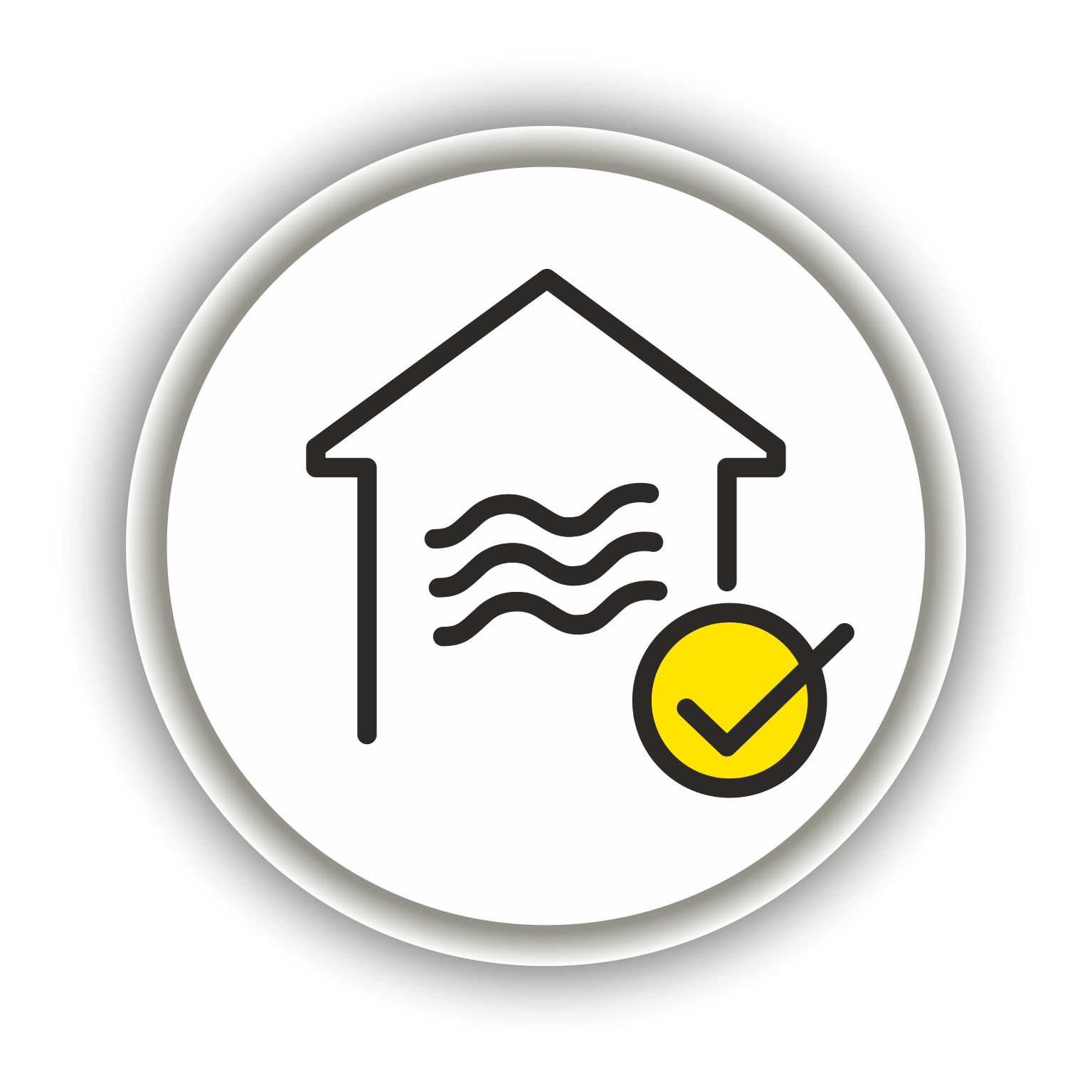further
information
Information
request
Hotline
0043 (0)7252-220-500
initiative "A safe return to the office"
Three ventilation building blocks for the highest air quality, more productivity and a strong team spirit
Teams are like orchestras. The symphony of success can only be heard when all members of the ensemble are in tune with one another. With sparsely occupied office cubicles, the last few months were probably more like rehearsals. In the meantime, however, many employees are returning to their usual workplaces. They are motivated to exchange ideas with colleagues again, to work together and to spend time together. The basic prerequisite for this to succeed is excellent air quality. But the air quality depends on numerous factors.
In order to untangle the complexities involved, we have developed the "A safe return to the office" initiative. This initiative minimises the risk of infection, prevents absenteeism, reduces follow-up costs, and even lowers energy consumption.
1st
building block »central ventilation«
Introduce virus-proof fresh air
As an environmentally friendly alternative to window ventilation, we recommend equipping buildings with a modern and efficient ventilation system. These systems enable continuous air replacement and the recovery of excess heat. To prevent infection, we recommend an air changeover rate of six times per hour. In a room of 60 to 70 square meters, this corresponds to an hourly air flow rate of 1,000 cubic metres.
For comparison:
even if there are only a few people in the room, windows would have to be opened for at least ten minutes every 30 minutes to air the room sufficiently. Organizationally speaking, this is almost impossible to do.
Modern ventilation systems offer a solution:
they regulate the fresh air supply automatically, so that employees can focus on what is important - their work. In addition, ventilation systems offer the possibility of recovering excess heat and using it to heat the supply air. So it doesn't just consume energy. It is also essential to regularly service and clean ventilation systems to ensure safe operation.
What does this look like in practice?
Unfortunately, our experience shows that too little attention is often paid to existing ventilation systems. This can prove particularly fatal in the current conditions. It is a little-known fact that ventilation devices automatically add exhaust air to the fresh air, regardless of the extent to which it has been cleaned. This is due to such systems not usually being designed to heat or cool large amounts of fresh air at low or very high ambient temperatures. In addition, ventilation systems are rarely completely airtight. So the supply air mixes with parts of the exhaust air. The results are often a mediocre indoor air quality and, in the case of a pandemic, the spread of pathogens throughout the building.
Get more out of systems and save energy costs at the same time
Choosing the right filter elements therefore plays a key role in air quality. Savings are often made in the wrong places. Every day we see that filter inserts with a low filtration performance1 are used in systems. With a size of 100-150 nanometres, however, coronaviruses are far too small to be effectively separated and retained by conventional filter inserts. We therefore expressly recommend the use of filter elements with the highest degree of separation efficiency. These include, for example, HEPA filters and the virus filter element we developed for Wavebionix® ventilation units.
With this filter element, the air quality is 10 times better than when using conventional filters2. As a result, the cleaned exhaust air can be safely re-added to the fresh air. Which in turn leads to an enormous reduction in energy costs (both heating and cooling): by up to 60%, to be precise.
__________________________
1 ISO coarse filter (formerly known as G4 or M5 filter) in the exhaust air or ePM1 50% filter (formerly known as F7 filter) in the supply air
2 compared to ePM1 50% filter (formerly known as F7 filter)
Learn more about Kappa Wavebionix®
virus filters
2nd
building block »decentralised room air«
Use room air filters correctly
Of course, there are also buildings with no ventilation system installed, or places where it is not possibly to replace air six times over.
In this case, we recommend using decentralised room air filters.
However, with the large number of different appliances available, it is difficult to keep track. When making your selection, make sure that the device is suitable for continuous use in the office. In addition to high ventilation performance, filter efficiency and volume are key factors in a high-quality appliance such as our Puron® SC.
Kappa Puron® SC room air filter:
The air purifier manages the balancing act of providing a high air output while simultaneously filtering aerosols and viruses very effectively. Its filtration performance is 99.995%. This means that out of 100,000 airborne particles, only 5 make it through the sealed filter system of the Puron®. At 42 dB(A), it's about as silent as a refrigerator. These factors ensure that the Puron® can be easily integrated into existing office spaces.
Find out more about Kappa
Puron® SC air purifiers
3rd
building block »Air analysis«
Analyze air quality in real time
Measuring the status of the air quality in a room is a complex task. But if you want to make a step in the right direction in terms of improving air quality, you need to know the initial quality of the room air to establish a reference value. This is the only way to decisively determine whether your measures are working.
According to our experience, the air's CO2 content is often used as an indicator by which its quality is assessed in buildings. In the current situation, however, this is far from sufficient.
Kappa Airic® air analysis system
Considering the human-to-human transmission of disease, the air's aerosol load is a more meaningful indicator. We have therefore developed an innovative air analysis system that, in addition to the most common air parameters, also determines the aerosol content: the Airic®. It collects the data, encrypts it and then visualises it on an end device in real time.

















